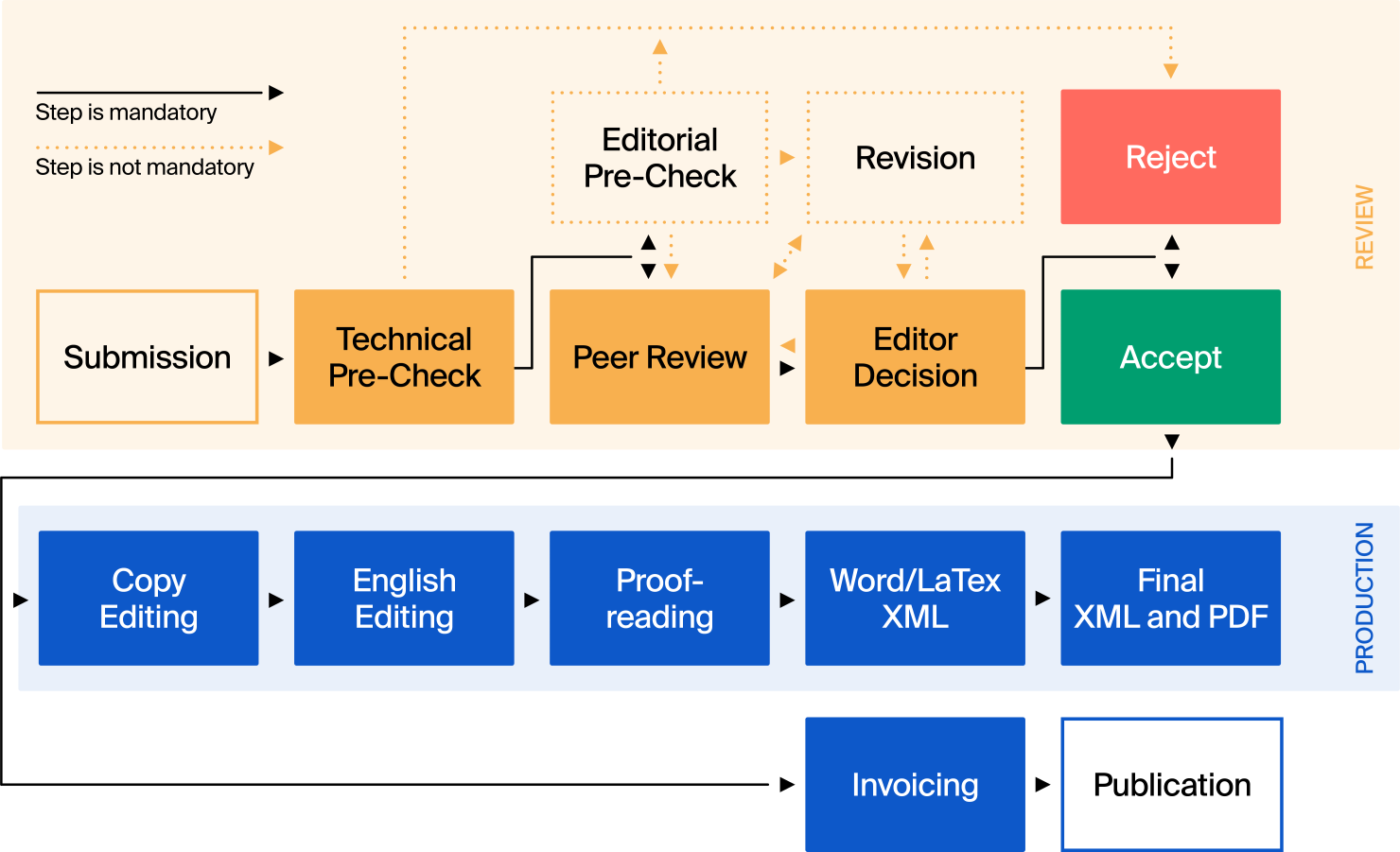
How and Why MDPI Offers Open Peer Review
Since 1996, MDPI has been a pioneer in open scientific exchange by ensuring all articles published in MDPI journals are openly available. Furthermore, MDPI is committed to increasing transparency and embracing openness throughout the research process. For example, MDPI hosts a preprints platform, Preprints.org, and offers open peer review to all authors.
Open peer review has been growing steadily since 2001 and rapidly since 2017. It is most prevalent in medical and health sciences and natural sciences. Researchers are generally becoming more open to the practice as it can increase transparency and also boost the quality of review reports.
Here, we cover what open peer review is, its benefits, and why MDPI offers it, as well as outline MDPI’s policies.
What is open peer review?
According to a systematic review by Tony Ross-Hellauer, leader of the Open and Reproducible Research Group, open peer review “has neither a standardized definition, nor an agreed schema of its features and implementations.”
The paper outlines the two most common elements of it:
- The reviewer reports are published alongside the articles (open reports).
- The reviewers’ identities are included in the report (open identities).
Publishers utilise one or both of these options to increase transparency and accountability.
MDPI open peer review policy
MDPI introduced open peer review to the journal Life in 2014 and extended the offering to the entire MDPI portfolio in 2018 as a way to increase transparency.
MDPI operates a rigorous and transparent peer review process that aims to maximize quality. It is handled by expert researchers and scholars who are committed to supporting the publication of high-quality science.

MDPI editorial process.
The option of open peer review is available across the whole MDPI portfolio.
Since 2018, participation in open peer review has ranged between 10% and 30%. In 2024, 21% of authors opted for open peer review when publishing in an MDPI journal.
MDPI open review options
MDPI journals allow authors to choose “open peer review”. Choosing open peer review means that review reports and author responses to reviewers will be published alongside the manuscript. This is known as an ‘open report’.
Regardless of what authors opt for, reviewers can choose whether their name appears on the reports. This is known as an ‘open identity’.
This flexible approach offers a balance between transparency and respect for the privacy and preferences of authors and reviewers.
MDPI authors have embraced the open peer review model and there has been a steady increase in published reports since the launch of this initiative in 2014. Reviewers, however, have been slower to embrace open identities.
Benefits
There are various benefits to open peer review, which primarily stem from increasing transparency.
Encouraging trust
The review process relies entirely on the hard work and commitment of scholars to maintain the integrity of the scholarly record.
By sharing this work openly, readers can further contextualize research and gain insights into how experts have responded to it. This can lead to new perspectives and readings of the work, as its contributions, strengths, and weaknesses will be outlined.
Such transparency further demonstrates the scale and rigor of work that goes into ensuring scientific research is sound and shares the insights of experts in the field.
Accountability
Having the review appear publicly, and potentially the reviewers’ names, can lead to higher quality reports.
This is because they are accountable for their work, knowing that it may be scrutinized by readers. It may encourage reviewers to think more carefully about the scientific quality of the paper and how they present their reflections on it.
Openness also highlights which journals and editorial boards are following rigorous processes. This can help address concerns about the quality of review procedures across the research landscape.
Facilitating discussion and training
Open reports enable broader discussions about the reviewed article, the journal and its editorial processes, and the state of peer review as a whole.
This is a key aim of open science: facilitating the communication and evaluation of science. Openness enables inclusivity by allowing a broader range of members to participate in the process and in reflection on it.
Processes and work can only be refined if there is such reflection in an inclusive manner, as diverse perspectives can lead to new ideas. In this regard, openness could facilitate innovation in peer review.
Further, having a catalogue of open reports enables younger researchers to use them as resources as they perform their first peer reviews.
Recognition
High-quality peer reviews require a lot of time and effort from researchers. Lack of incentives is a key challenge in this space, but recognition can serve as one.
Open reports and identities display the rigorous review process and credit the reviewers undergoing it. Reviewers can link to their open reports as representations of the strength of their contributions and commitment to their fields.
What reviewers think of the MDPI review policy
MDPI is always looking for ways to refine its processes. To do so, MDPI engages with feedback from authors and reviewers.
Here is what reviewers have to say about MDPI’s processes:
I had a very positive experience reviewing for an MDPI journal. I appreciated the journal’s commitment to transparency and scientific rigor, and I look forward to contributing again in the future. – Reham Rezk, University of London, Egypt, Reviewer for Applied Physics
Reviewing for MDPI has been a rewarding experience. The platform is user-friendly and promotes transparency, making it easy to provide efficient feedback. – Nanush Damarlapally, Houston Community College, USA, Reviewer for Medical Sciences
As a reviewer, I appreciate the quality and the transparency of the services of MDPI for reviewing manuscripts. This experience with MDPI allowed me to enhance my capacity to analyze problems treated by the papers and give useful comments. – Hicham Es-soufi, Ibn Tofail University, Morocco, Reviewer for Ceramics
MDPI is committed to transparency and openness
As reflected by the UNESCO Recommendation on Open Science, there are industry-wide calls for and attempts to embrace openness throughout the research process, not just at an output level.
Open peer review is a key factor in ensuring openness, as it boosts transparency and can increase accountability for reviewers. This can lead to an improvement in the quality of peer review, and subsequently encouragement to improve the scientific output.
The option for open peer review is available across the entire MDPI portfolio. Authors can choose to publish the review reports and their responses with the published paper. Reviewers have the choice of listing their names regardless of the author’s decision.
Furthermore, MDPI ensures there are more opportunities to engage in open discussions throughout the research process. For example, published articles can be discussed via Discussions on Sci Profiles, a scholarly community for scientific authors. And on Preprints.org, researchers are able to comment on versions of articles before they are peer reviewed.
Alongside open peer review, these spaces for open discussions help build trust in science, increase dialogue, and create opportunities for engagement.
MDPI is committed to enriching the scientific record by ensuring transparency and openness, whilst also remaining flexible. Click here to learn more about MDPI’s editorial policy.
If you want to learn more about Open Access, see our article Why Open Access is Important for more.










